-
Start
-
Daereungwon Ancient Tombs
-
Cheomseongdae
-
Gyochon Village
-
Gyeongju National Museum
-
Bulguksa Temple
-
Bomun Tourist Complex
-
Gyeongju Tower
-
Bunhwangsa Temple
-
Food
-
Finish
Gyeongju is a famous tourist site where every Korean have visited for at least once. But most will only remember as a part of their school trip, thinking 'Oh, I have seen that'.
As for me, I also remember Gyeongju as one of the annoying schedules rather than a tour. So I don't have many memories, I just vaguely remember a few places.
So today, I would like to travel to regain the forgotten memories of Gyeongju, the thousand year old city of Silla.
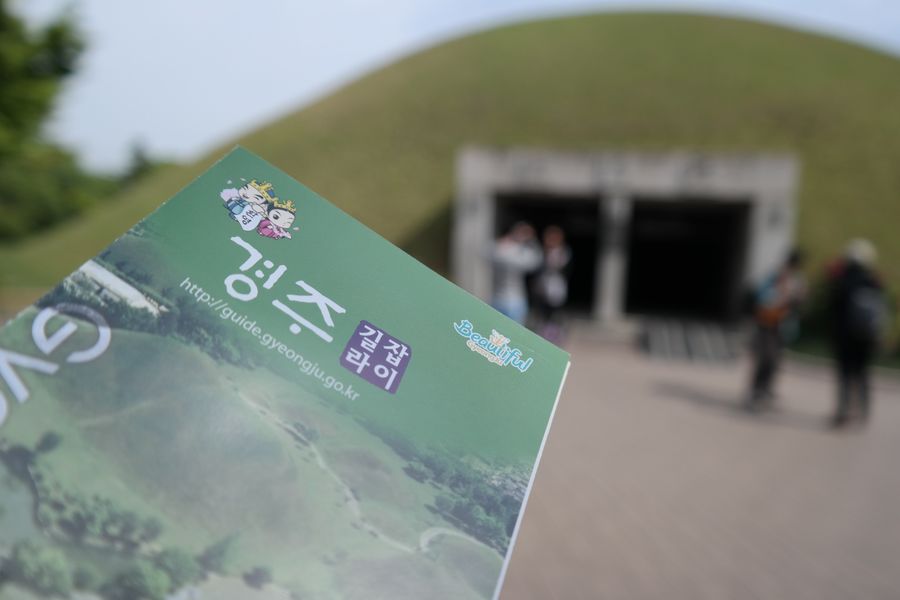
Many cultural heritages that are worth to be protected, such as Egypt's Pyramids, Machu Picchu in the Andes are designated as World Heritage Sites and are protected and managed by UNESCO.
Of course, there are several World Heritage Sites including Gochang Dolmen Site, as our nation has plenty of eminent culture and tradition.
Among those, we are going to visit Gyeongju, which has 'Gyeongju Historic Area', 'Yangdong Village', 'Seokguram Grotto and Bulguksa Temple' .
Gyeongju is full of attractions, and is the place having the largest number of World Heritage Sites in the country.
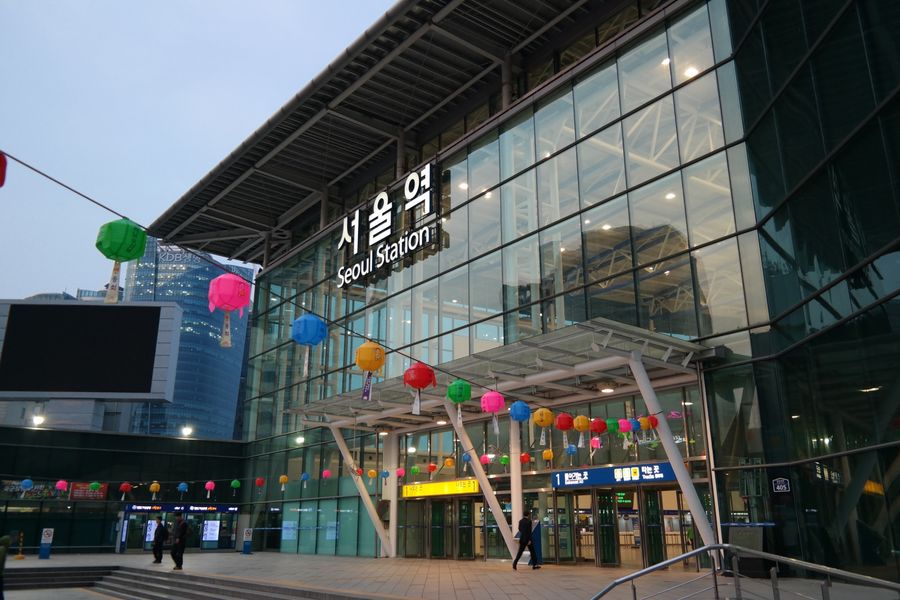
But, the distance between the Seoul region and Gyeongju is over 350km. I didn't want to spend too much time on the moving time, so I decided to use the KTX, which takes only 2 hours instead of a highway bus that takes more than 4 hours. So I arrived at Seoul Station early in the morning, giving up my sleep.
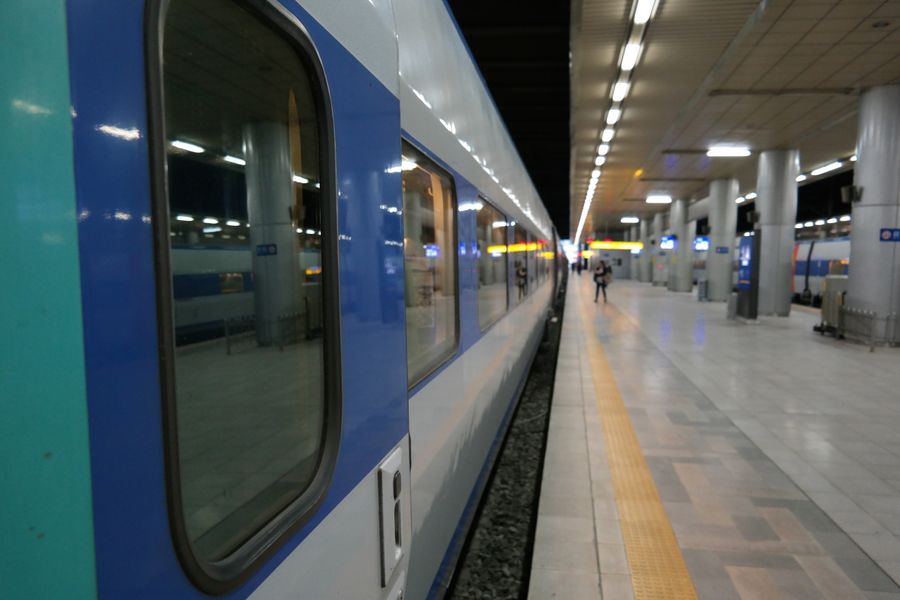
Usually Seoul Station is crowded on Saturdays, but because I was in the early morning the station was quiet.
I had a light breakfast with a hamburger and got on the 6:30 train for Singyeongju Station.
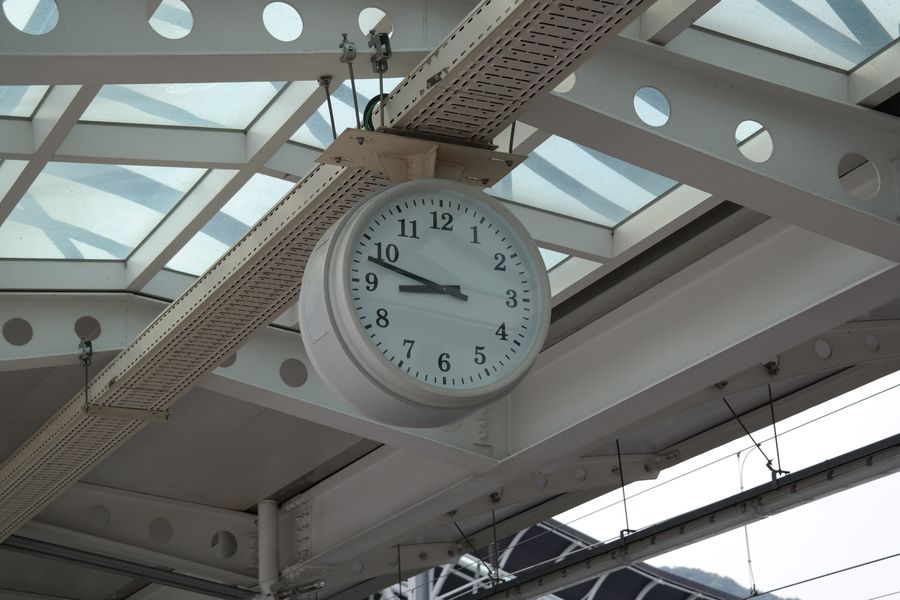
Then I spent 2 hours and 20 minutes fighting with the sleep that I couldn't had last night. And I arrived at Singyeongju Station much faster than I thought.
In fact, there are two ways to go to Gyeongju by train. One way is going to Singyeongju Station, which is a station of KTX. And the other way is to move to Gyeongju Station that splits from Dongdaegu Station.
Moving to Singyeongju Station is faster to come from Seoul region, but it's a bit away from the downtown of Gyeongju. On the other hand, Gyeongju Station is located in the city, but has a disadvantage that you have to exchange.
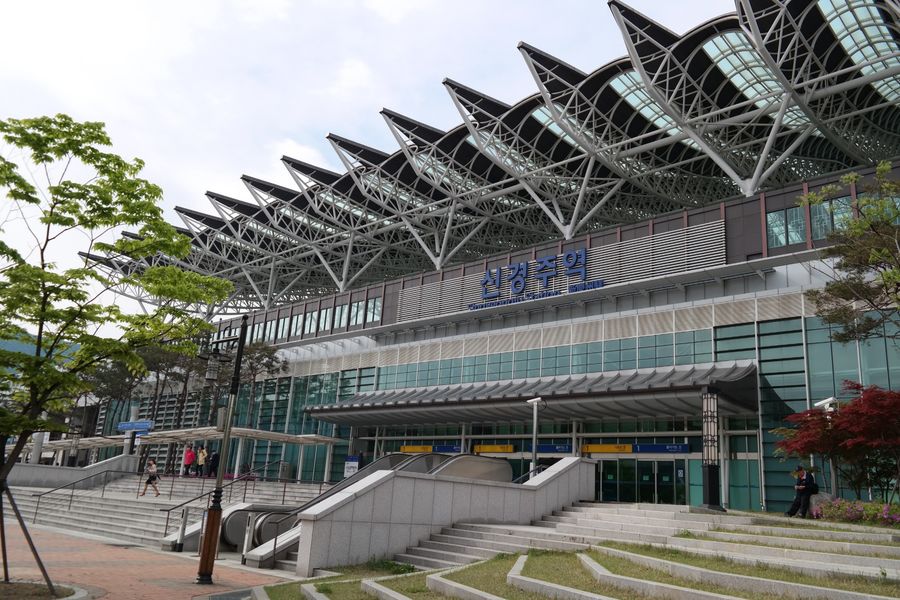
We arrived at Singyeongju station which is 20~30 minutes away from the city to the west side. Fortunately, Gyeongju's urban bus system is good enough for tourists to use as transportation.
Especially, the triangle region between the terminal, Gyeongju station and the tourist region that includes Bomun site and Bulguksa Temple has at least one bus per 20 minutes.
If you are planning to use public transportation at Gyeongju, you can check the and timetable easily at the homepage(http://www.gumabus.com/) of Geuma Bus, the bus operating company of Gyeongju region.
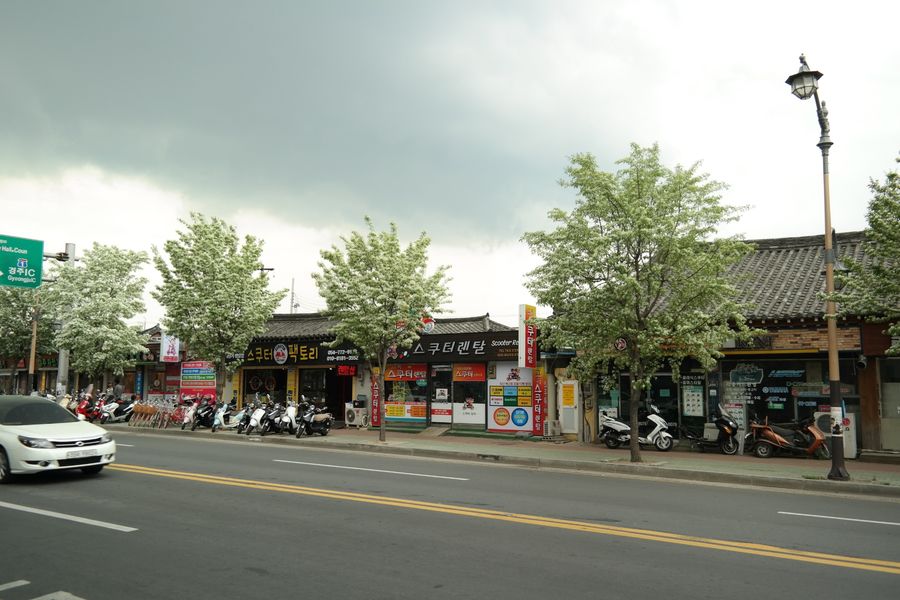
And if you are planning to take a look of Gyeongju's downtown area, there are bunch of scooter and bicycle rental services at some tour sites near Gyeongju station and the terminal. So you can enjoy romantic transportations at a reasonable price.
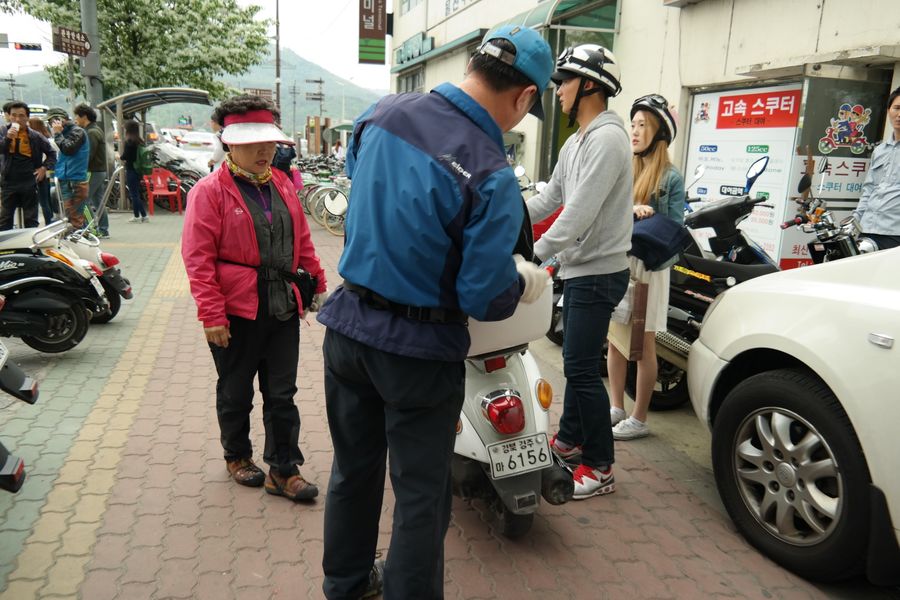
The fee is various depending on what season it is, and which rental company you will use. Averagely in the off-peak season, scooter fee is 25,000~30,000 won for 3 hours and 35,000~40,000 won for 6 hours, bicycle fee is 5,000~7,000 won for 1 hour.
And obviously, to rental a scooter you need a license. As Gyeongju is one of the tourist site cities which has lots of vehicles, as long as you keep the safety rules, maybe these transportation will be useful than rent cars.
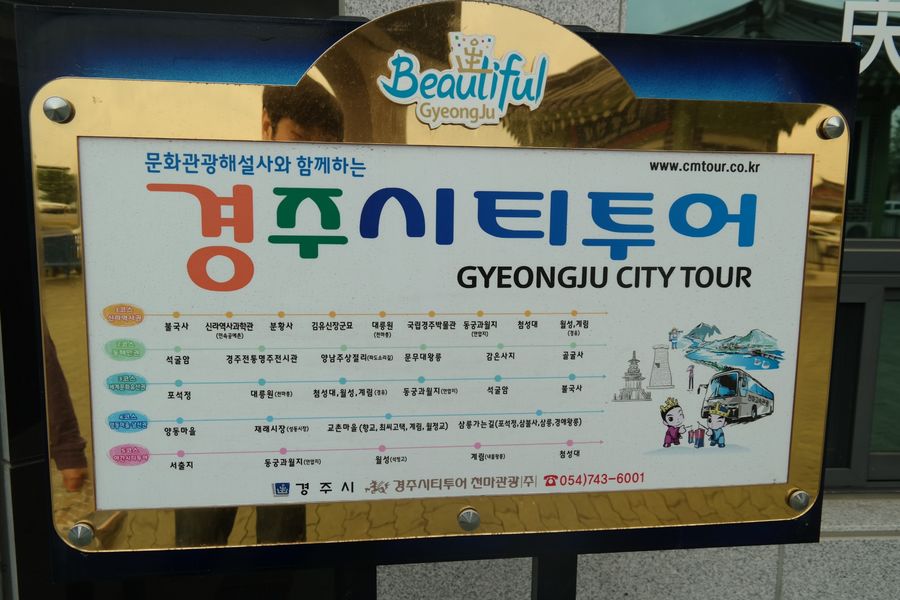
If you want a more comfortable trip, try using 'Gyeongju City Tour Bus' which is another way to enjoy a comfortable tour.
City Tour Bus is divided into 5 courses of Silla History course, East Sea course, World Heritage Site course, Yangdong Village/Namsan course, City Night Tour course.
But reservation on the very day is impossible, so you should reserve at least a day before the use.
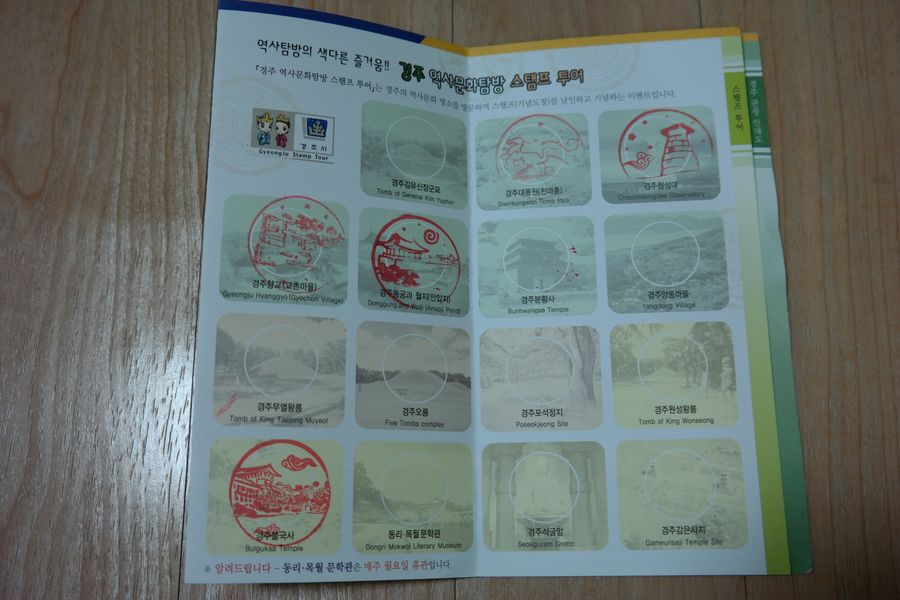
And there is another delight of Gyeongju History Culture tour. Gyeongju city is also operating culture stamp tour, for a more interesting tour. It has been on-air in a program called '2days and 1 night'.
There is no souvenir given, like in 'Danyang, Chungbuk' that we had visited last year, but collecting the stamps of the cultural sites that you had visited will give you a pleasure.
You can take brochures from Tour information desks or at the tourist site ticket offices, and be aware that you can get the stamp until the culture tour guide's working hours.
Address: 1010, Hwacheon-ri, Geoncheon-eup, Gyeongju-si, Gyeongsangbuk-do (경상북도 경주시 건천읍 화천리 1010)
Tel: 1544-7788
Website: http://www.korail.com/
Address: 243-15, Noseo-dong, Gyeongju-si, Gyeongsangbuk-do (경상북도 경주시 노서동 243-15)
Phone Number: 054-743-6001
Website: http://www.gyeongjucitytour.com/
Daereungwon Ancient Tombs (Cheonmachong, Hwangnamdaechong, Mitsu Tomb) 대릉원
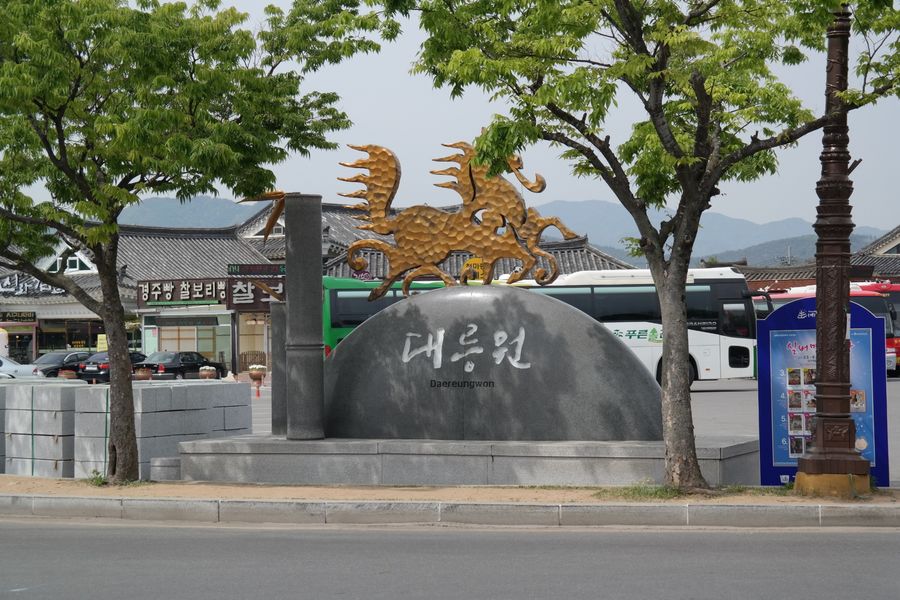
Now the preparation is finished, and after we arrived at Singyeongju station, we headed for Daereungwon, which is located in the heart of the downtown.
There are more than 20 royal tombs which are spread in 4~5 areas, and among those the area of Cheonmachong is the most famous place.
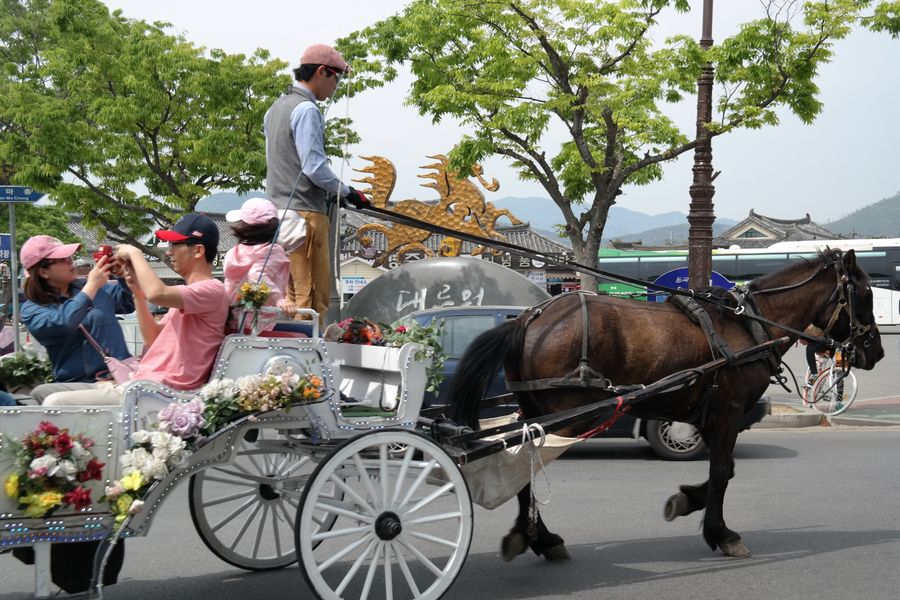
In Daereungwon parking lot, the sound of the tour wagon makes me realize that I am at a tourist site.
Listening to the powerful beat of the horse hoofs lifts our feeling to move vigorously.
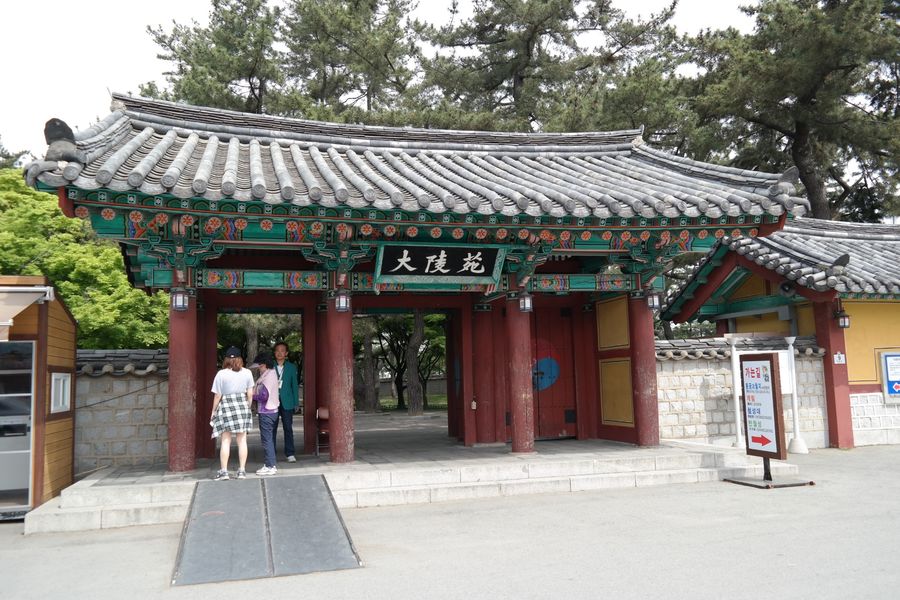
There are two entrances of Daereungwon. The North Gate side (the back door) is towards the main road of Gyeongju and is far from the parking lot.
On the other hand, the south gate side (main entrance) is close to the parking lot, but the narrow road is stuck with traffic jam, due to a lot of tourist buses.
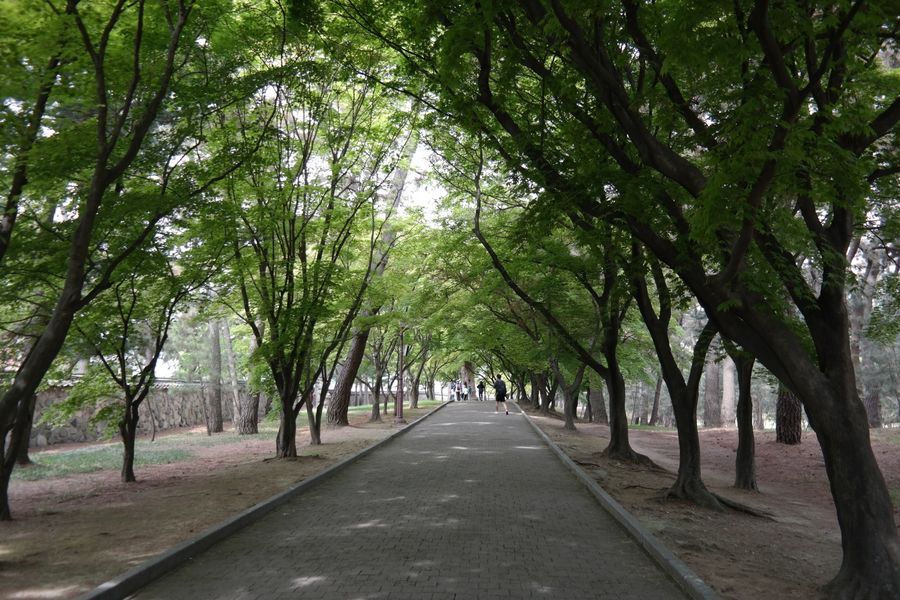
Is it perhaps a cherry tree? Once you are inside the fence at the main entrance of Daereungwon, a long trail of a forest leads the way. Although located in the central downtown area, the well-maintained forest provides clean air.
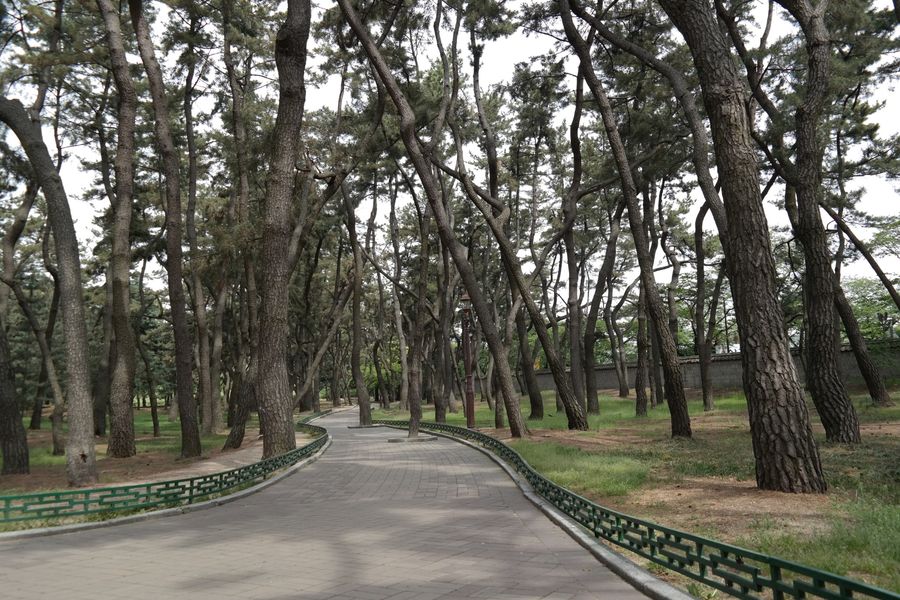
On the right there is a tall pine forest which is found a lot in places of Gyeongju, including Gyeongju Namsan.
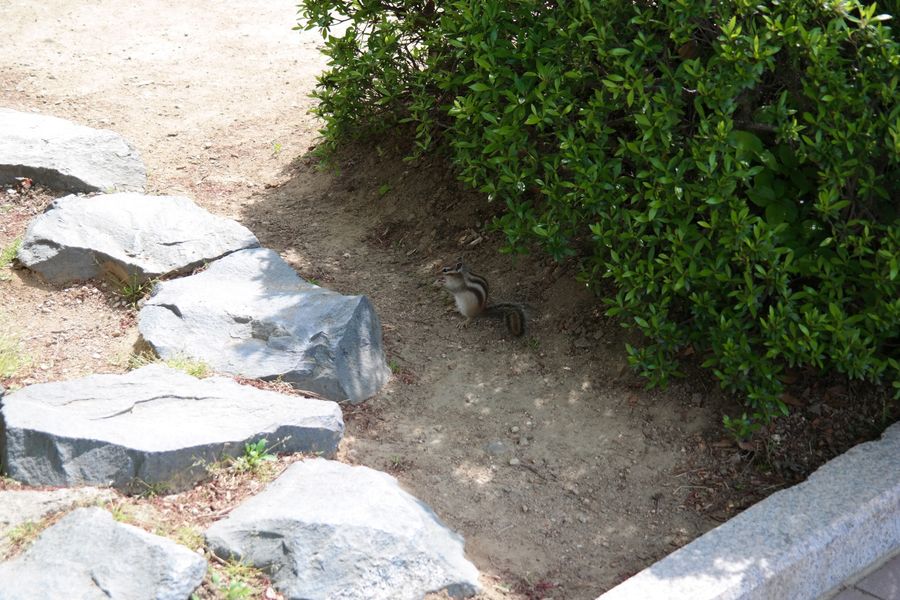
While we walked slowly down the path down the trees, something went fast across in front of our way. The identity of the guy is a squirrel.
As we looked around, there were not only one or two squirrels, but quite a large number of squirrels lived here in Daereungwon.
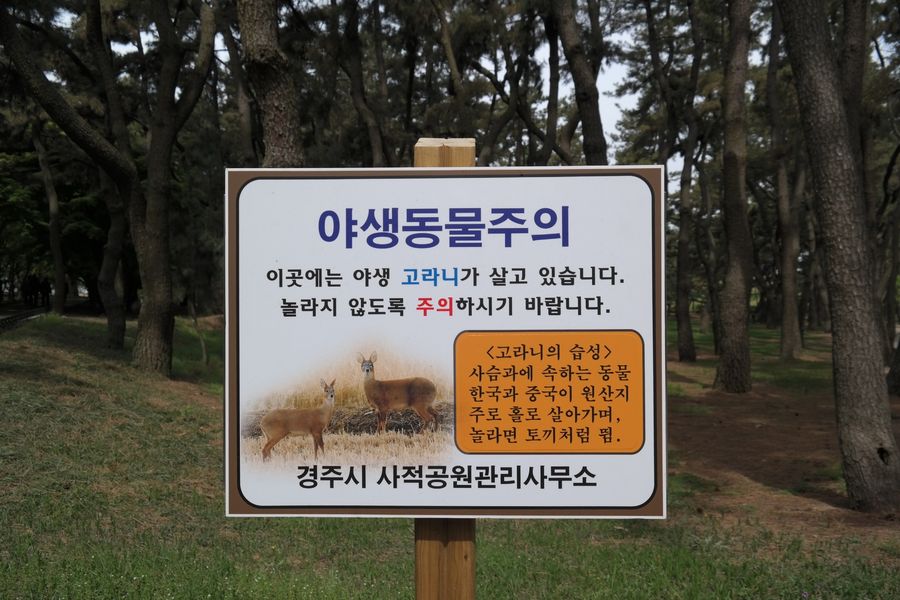

I thought of what should I do just in case I encountered an elk as we walked slowly through the trails. The first tomb we have in Daereungwon is the royal Tomb of Michuwang(262-284), the 13th king of Silla.

According to the legend that says the bamboo turned into an army and defeated the enemy soldiers, the Tomb is also called as 'Jukhyeonreung (height 12.4m / diameter 56.7m) '.
And the owner of this tomb Michuwang is also known as the first king of Silla to have the surname Kim, and is a descendant of Kim Alji.
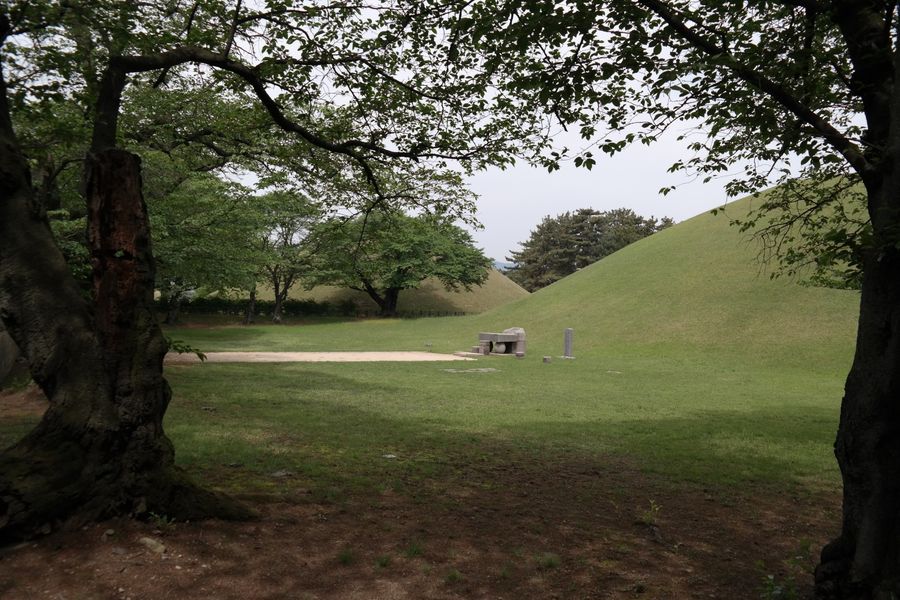
Unfortunately, the door of the tomb was firmly closed, surrounded by a fence. It was different from the other tombs in Gyeongju, so we could not see more.
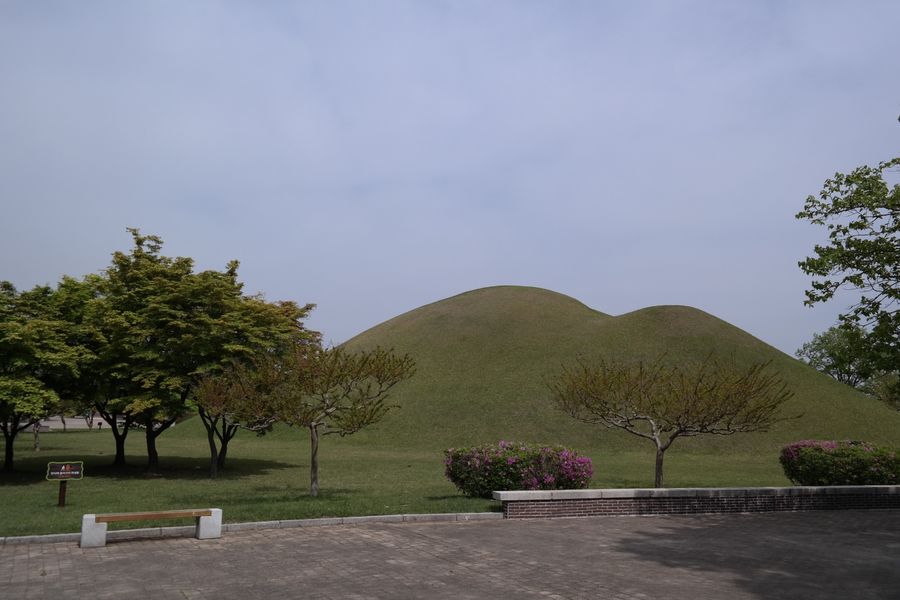
Beyond the Mitsuwangreung there is the large tomb called Hwangnamdaechong(Civil 120m, east and west 80m, height 23m) that are consisted of two-peaks like a back of a camel.
This Hwangnamdaechong is a historically significant tomb, which was found having thousands of artifacts and the lower jaw of the buried person. But the owner of the tomb is not discovered yet.
Instead the grave is assumed to be belonged by a couple, the south grave of the husband and the north grave of the wife.
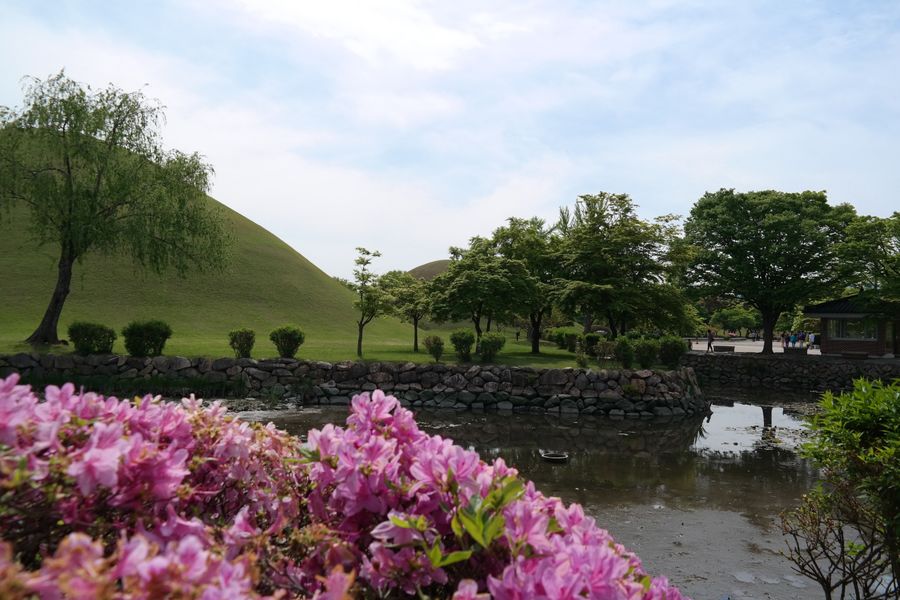
As we marveled at the size of Hwangnamdaechong, and came around it, a small pond came out with a well-organized green grass of the tomb, with red spring flowers showed us a spectacular scene.
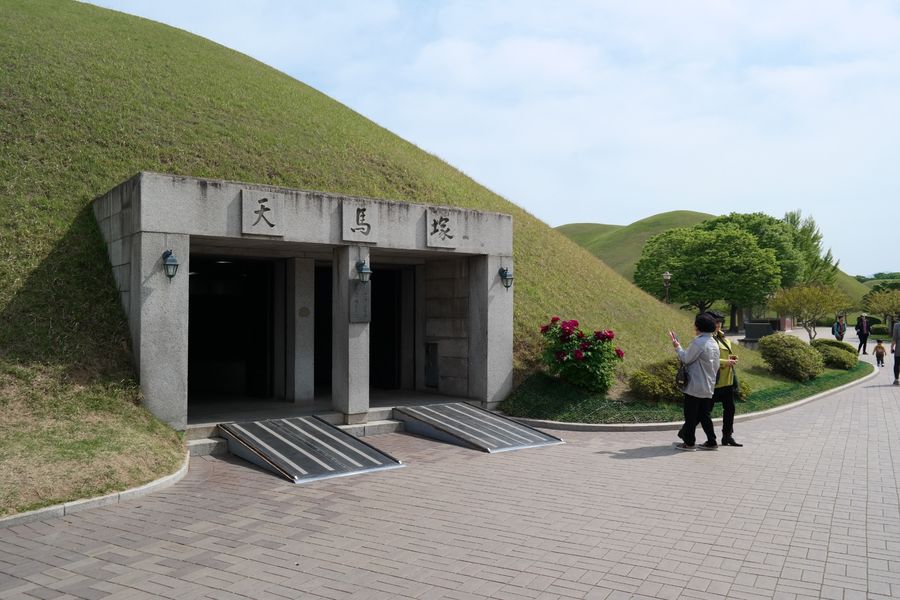
When you watch the flowers and turn around the pond, the entrance to the Cheonmachong in front of Daereungwon's North Gate comes out. Cheonmachong is the best core sight spot of Daereungwon and we can go inside the tomb and watch the tomb's structure.
Cheonmachong is decorated like a small museum so that you can see the structure of the tomb directly.
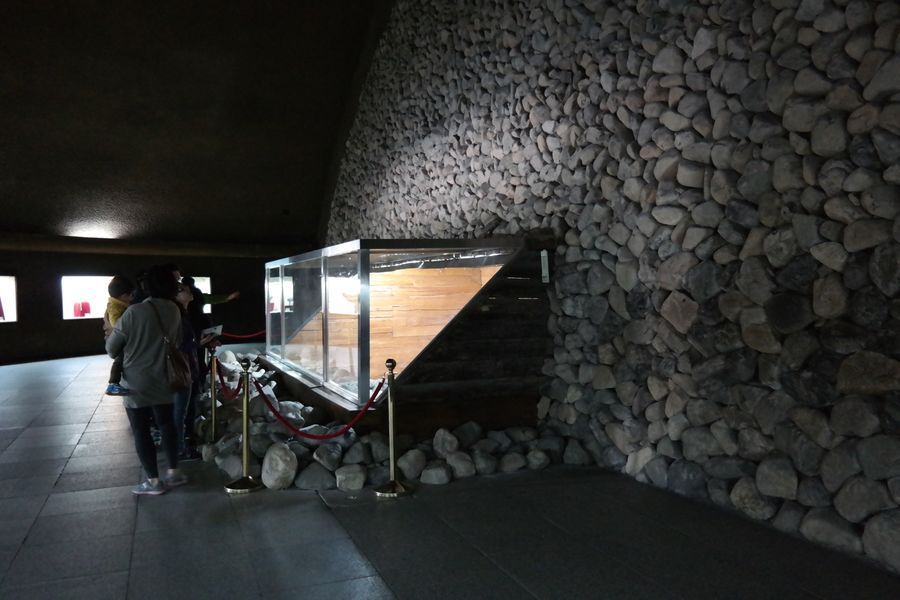
A considerable amount of Silla tombs are built up in a part of a way called jeokseok mokgwak Wood coffin covered with pebbles mound (Dolmuji deotneol tomb). The body is layed in a wooden coffin and is stacked with rocks and soil.
Because there is no entrance to the inner side of the tomb, even after a long time the tomb is likely to have low percentage of tomb theft and many artifacts are found than other graves.
Thanks to that, Cheonmachong was also safe from robbery and not less than 11,500 pieces of ruins were unearthed and has become one of the great excavations in the history of our country's excavation history.
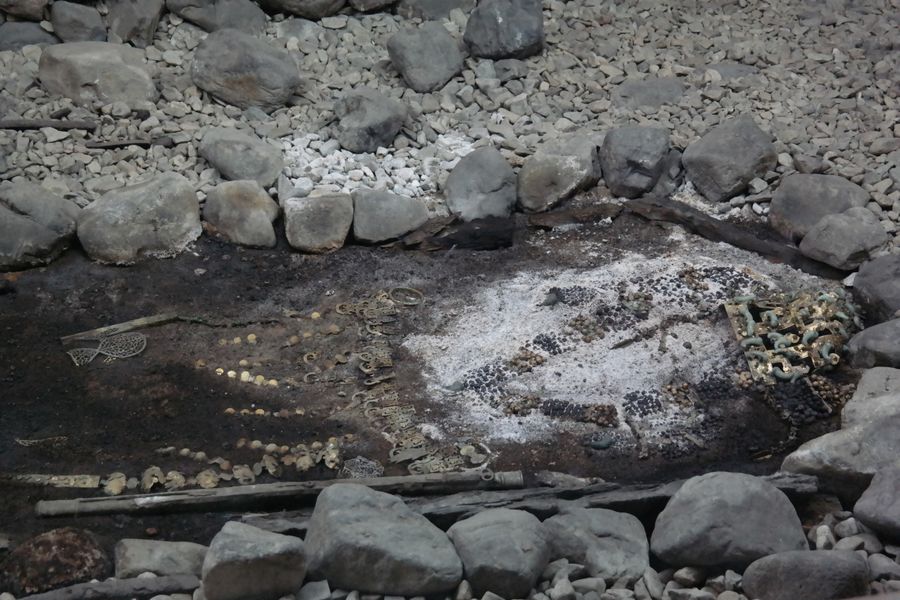
Among the wall showing the tomb's inner side, there is a glass resembles showing the sight when the actual relics were unearthed.
The buried person just put his head into the east (right) which is associated with sun worship, and they are estimated to be the leader of Silla before the Beopheung king, who had accepted Buddhism to Silla. The commentator explained to us.
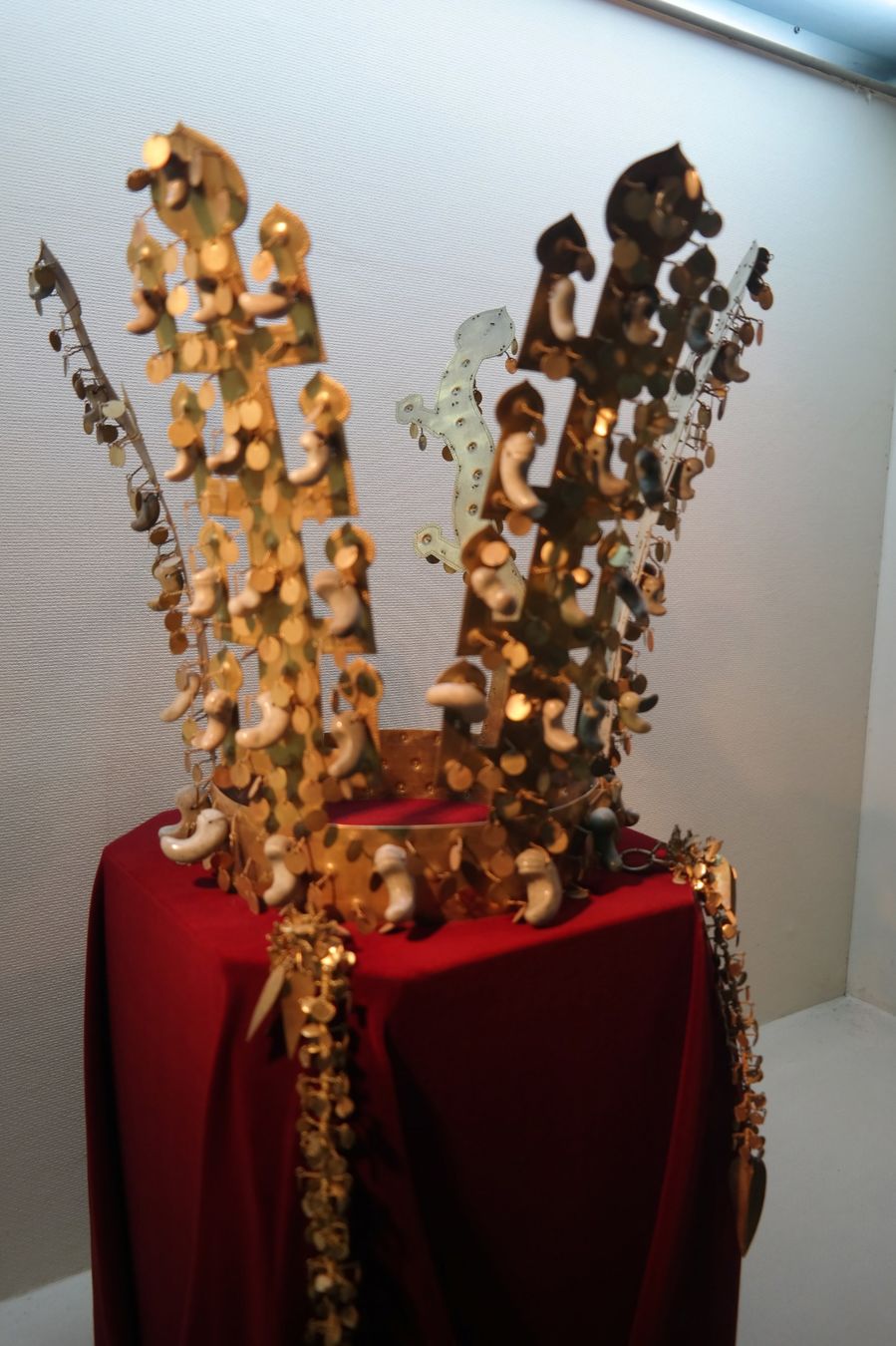
There are Silla's unique representative artifacts such as Silla's unique gold brass exhibited at the side of Cheonmachong. This Brass has been found in Cheonmachong, and is the largest Silla brass that is excavated so far.
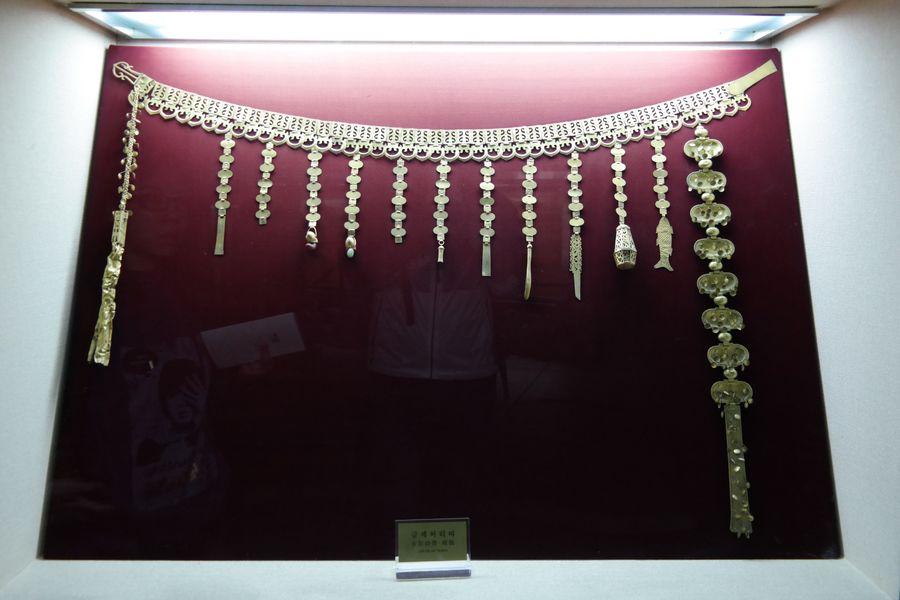
The golden brass and sash are looking very splendid to see even in nowadays. But the belt looks a little uncomfortable to sit down while wearing that in the real life.
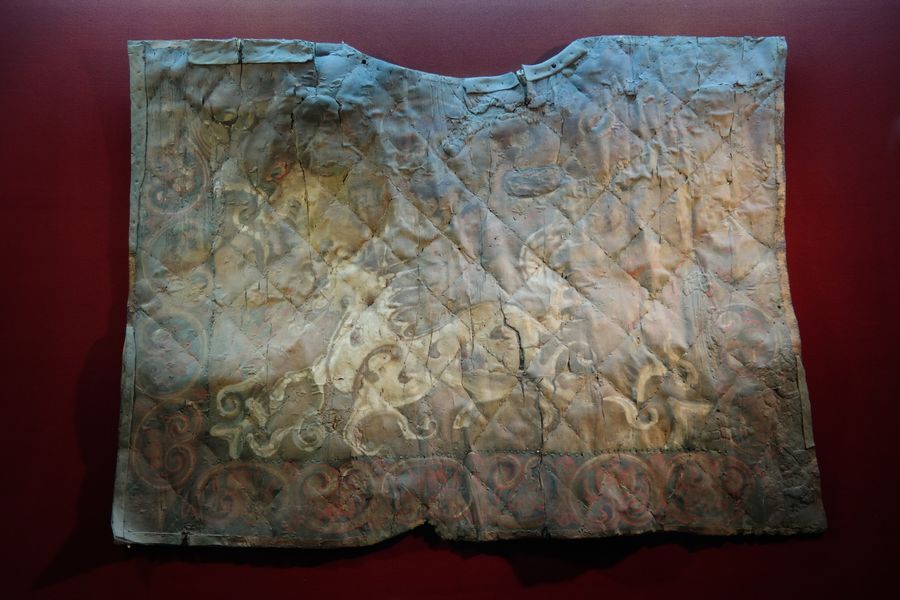
And finally, the actual ruin who made this tomb to be named as Cheonmachong. The drawing of a horse, looking like it is flying is called 'Cheonmado'.
But unfortunately, this exhibit is a finely crafted replicas and the real Cheonmado is being exhibited in the Gyeongju National Museum's Special Exhibition.
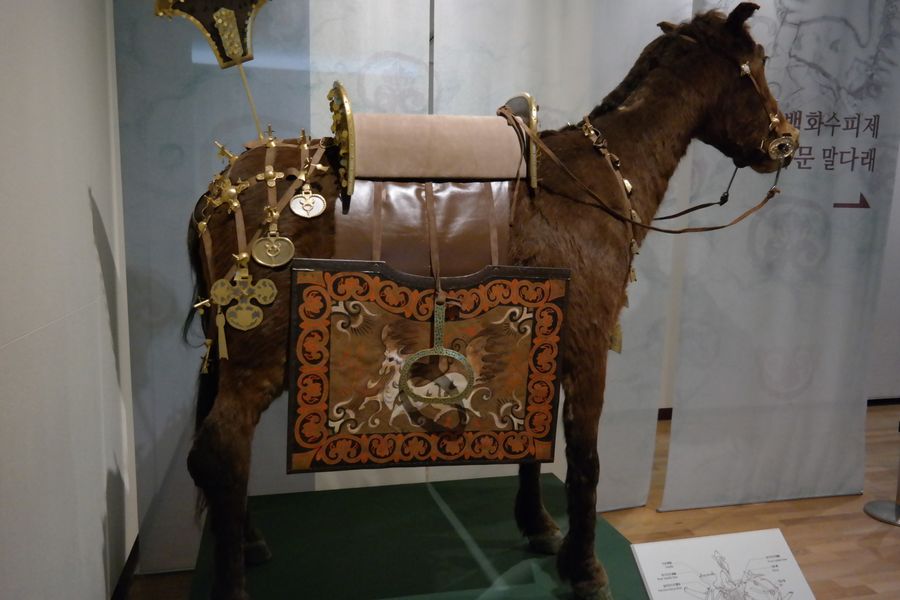
There are many people who think Cheonmado is a drawing on a wall or on paper, but actually it is painting on a Maldarae, a device as a decoration tied under the saddle to prevent the soil splash while the horse is running.
As well as Cheonmado, many other similar grave goods are on display at the Gyeongju National Museum, so let's simply look through at Cheonmachong and move to the next attraction.
Daereungwon 대릉원
Address: 53, Hwangnam-dong, Gyeongju-si, Gyeongsangbuk-do (경상북도 경주시 황남동 53)
Phone: 054-772-6317 Opening hours: 9:00 to 22:00
Around Daereungwon
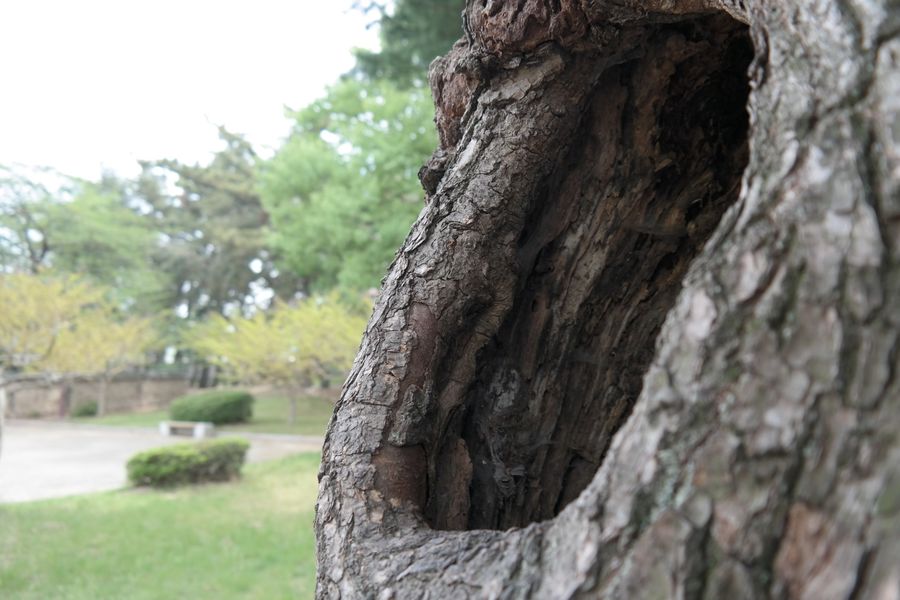
There is Sunghyejeon, the royal household of Gyeongju Kim, at the left side of the south parking lot of Daereungwon. If you have time after looking over Cheonmachong, it would not be bad to look around.
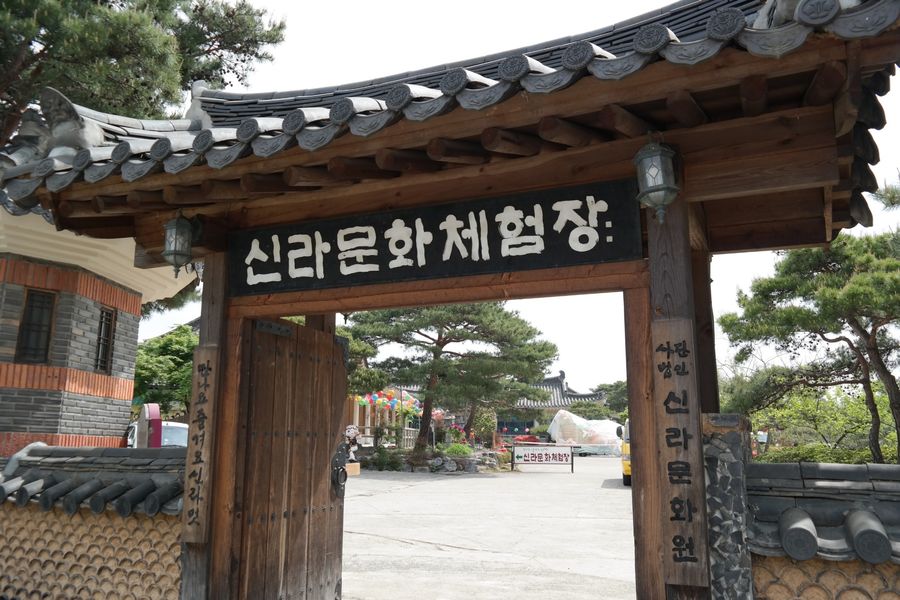
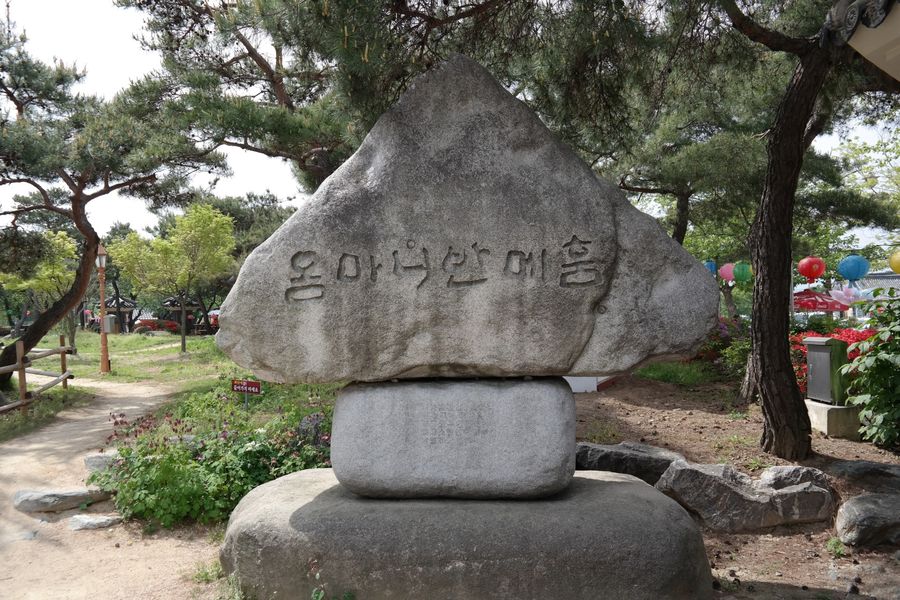
'Om Mani Banmeheum' is a monument at the entrance of the Experience Center. By the way, I think this is a little vague-looking name for the monument to be in front of the Experience Center.
Daereungwon area is one of the world's cultural heritages 'Gyeongju Historic Areas' and it's a place that you can see the Wolseong district and Cheomseongdae within a few km, so it is the best attraction area.
Because of it, Daereungwon is one of the 3 important visiting places of Gyeongju. I hope you make sure to visit here when you travel Gyeongju.
Address: 99 Street Hwangnam-dong, Gyeongju-si (경상북도 경주시 황남동 99번지)
Phone: 054-777-1950
Opening hours: 09:30 to 17:30
Gyeongju Haejangguk famous street 경주 해장국 명물거리
Gyeongju is a rich city of history and tradition, but the traditional food of the region failed to develop it's local features than I thought. During the trip I asked the taxi driver and other residents for the information of local famous restaurants.
Maybe because Gyeongsang region has a bit glum expression, they all answered “This one? Or that one? There's nothing to recommend clearly.”
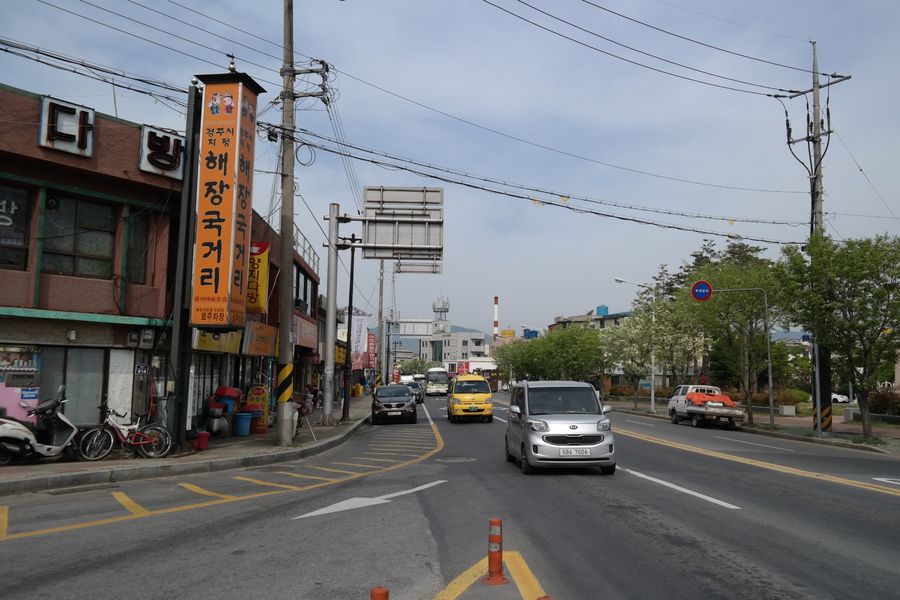
But when I researched before the travel, I found that there is a famous Ssambap restaurant around Daereungwon and a traditional Korean restaurant around Kyochon and also a Bulgogi area just north of the city, but yet there was no time to go to these places so instead, I went to the Haejangguk famous street which was attracting on the map.
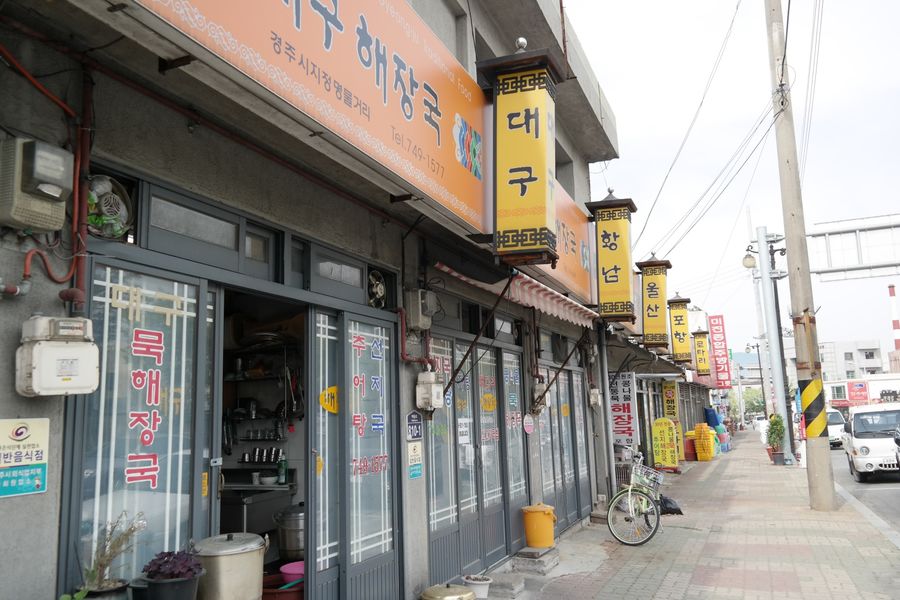
Haejangguk famous street is located 5~10 minutes away by walking at the right side(Parujeong) of Daereungwon's north gate.
The yellow signs are all Haejangguk restaurants. It is a bit short to be called as a famous street, but everybody living in Gyeongju know the street and the food is also a bit different from general Haejangguk.
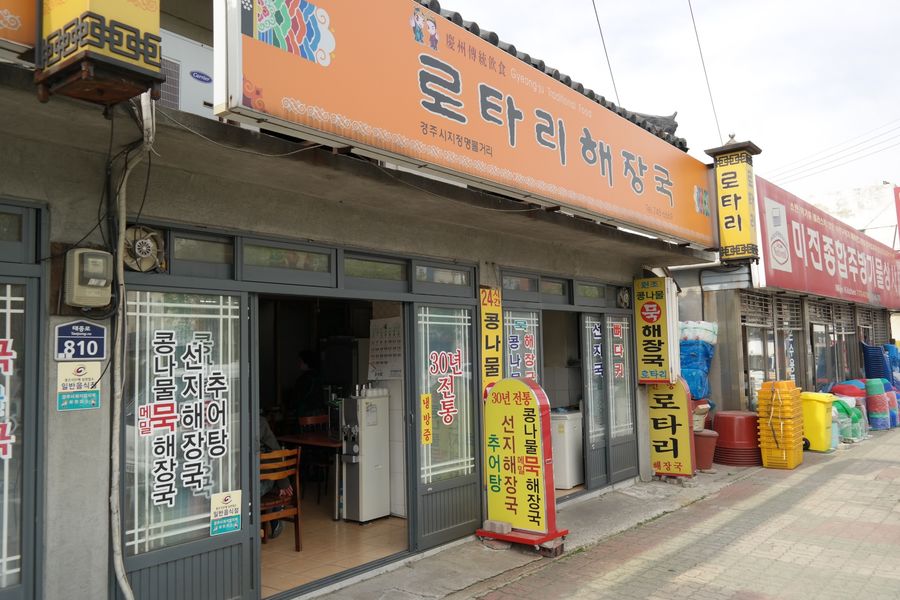
The landscape of the street lined with signboards of the restaurants in a row looked like they are unified. But the restaurant itself felt like a shabby rural market's restaurant.
We looked around the area and chose the biggest, and the most crowded 'Rotary Haejangguk'.
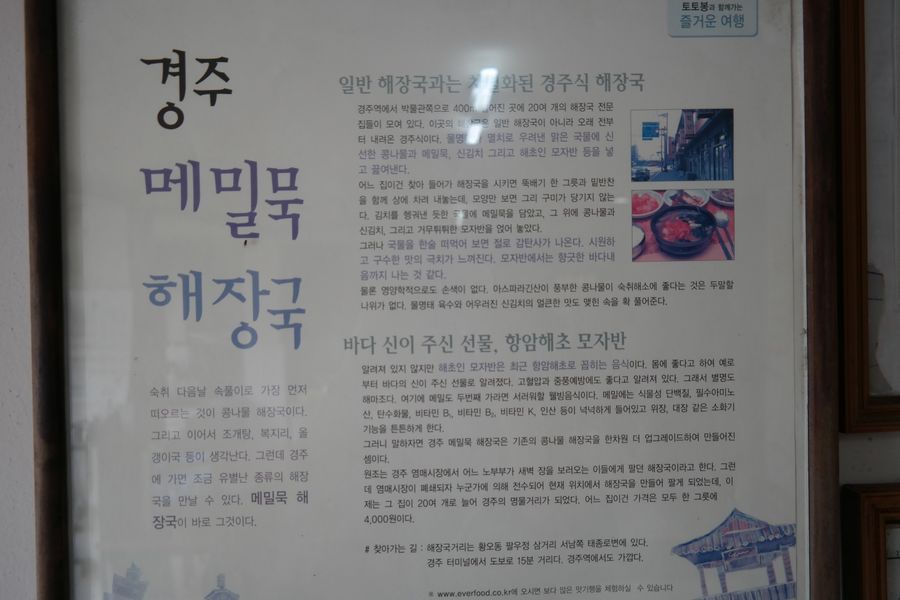
Just like all the other Haejangguk houses are around here, the main menu is a differentiated Memilmuk Haejangguk.
The thought of Haejangguk with Muk(jellied food) is fresh to imagine. Aside to whether it will taste good or not, it is a food that I never thought of.
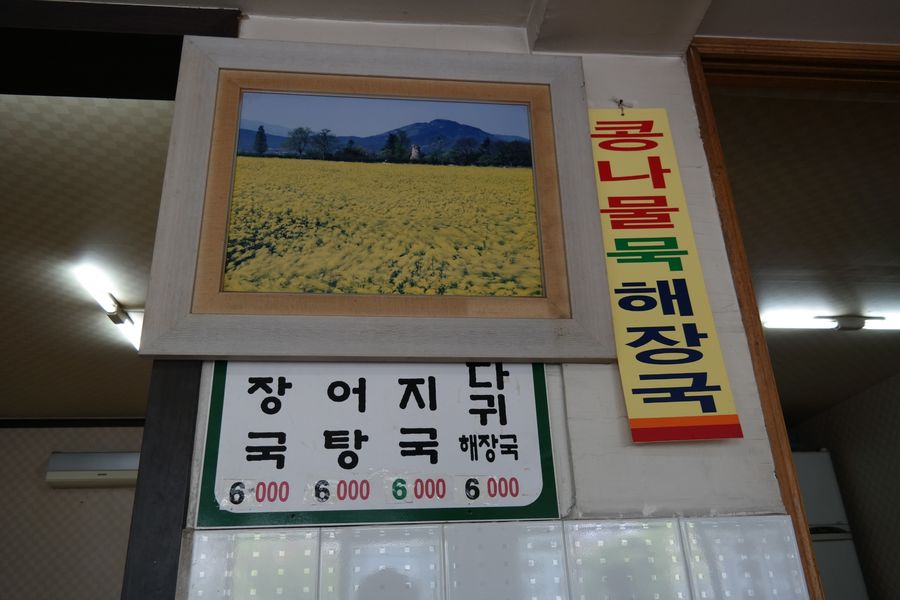
At 'Rotary Haejangguk', there are also Chueotang, Seonjiguk, and Bone Haejangguk along with Kongnamulmuk Haejangguk. All four menu's prices are 6000 won each. Maybe the price has rose, different from the prices posted on some blogs(5,000 won).
Well, the prices of the admission fee of tourist sites are also has changed a lot from the content on the Internet. (Seems to be changed since January 2014.)
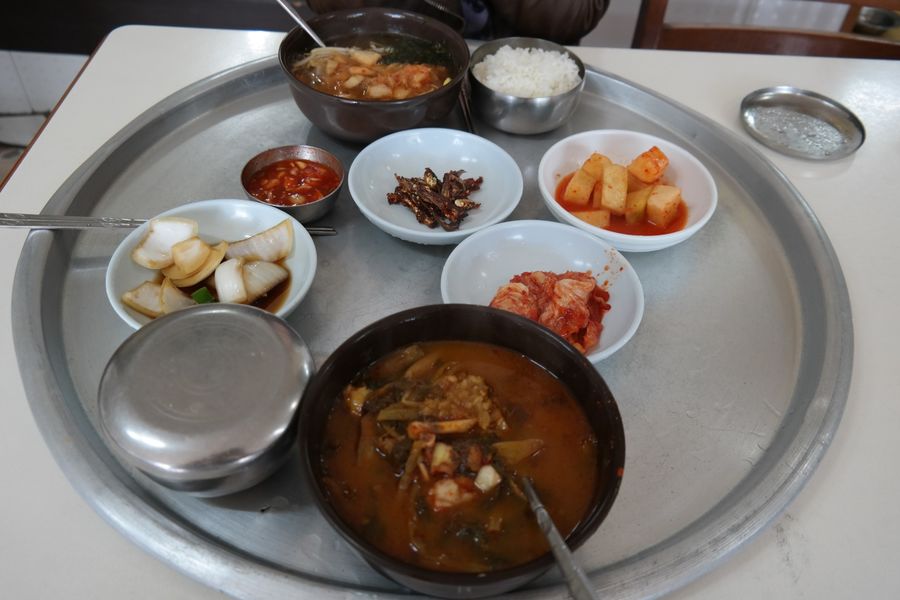
We ordered the representative menu Kongnamulmuk Haejangguk and seonji(clotted blood from slaughtered cows and pigs) Haejangguk.
Several simple side dishes came outwit the food in a short time. All the other restaurants in this street offer the same menu and side dishes like here.
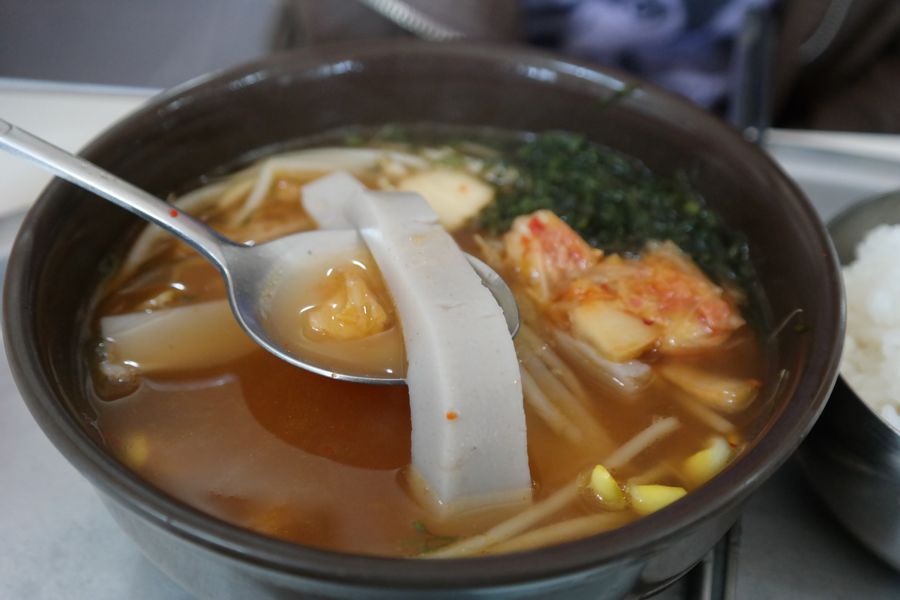
I tried a spoonful of the Kongnamulmuk Haejangguk first. Chopped kimchi and gulfweed with rich Alginates and 2~3 long Memilmuk was in the soup.
The soup's taste was made by Pollack's head, anchovies, dried shrimp, seaweed. Unlike original Haejangguk, it had no egg and had clean taste without any fat.
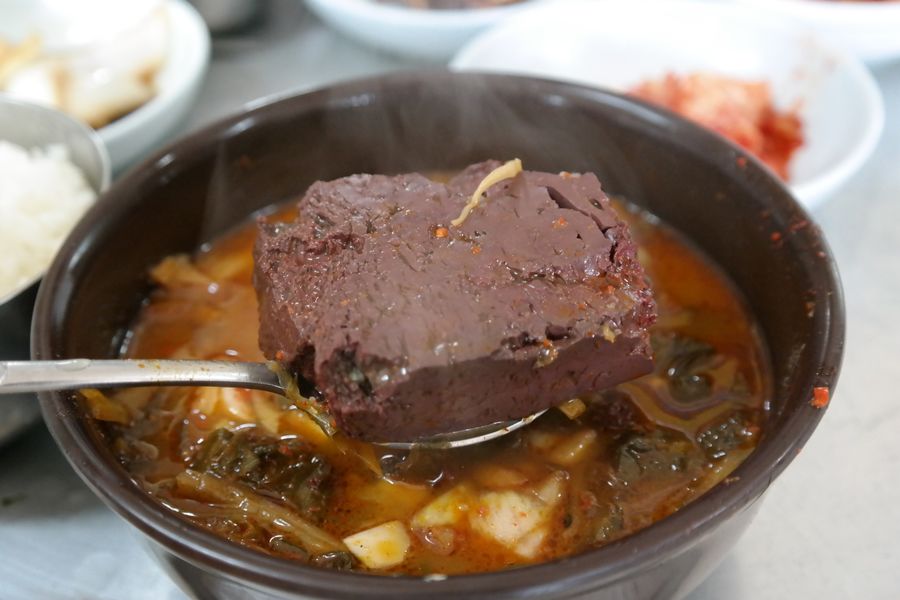
I tried seonji Haejangguk too, looking for Muk but I couldn't find. In seonji Haejangguk there was no such thing.
Instead, there was one big seonji ~ It's just as same with the general seonji soup sold in other local markets. I was a little disappointed ... But because I'm a creature who eats everything with no problem, I put the rice into the soup and ate it up, as if nothing was wrong. Finished~!!
Although the feeling of Gyeongju Haejangguk was unique, the appearance and taste of it wasn't that s good enough for a compliment compared to it's price.
But we always~ Eat the food up and then criticize… ^^;; Now that we have filled up our stomaches, let's go to our next place~!!!
Address: 109-12, Hwango-dong, Gyeongju-si, Gyeongsangbuk-do (경상북도 경주시 황오동 109-12)
Phone: 054-745-6669










